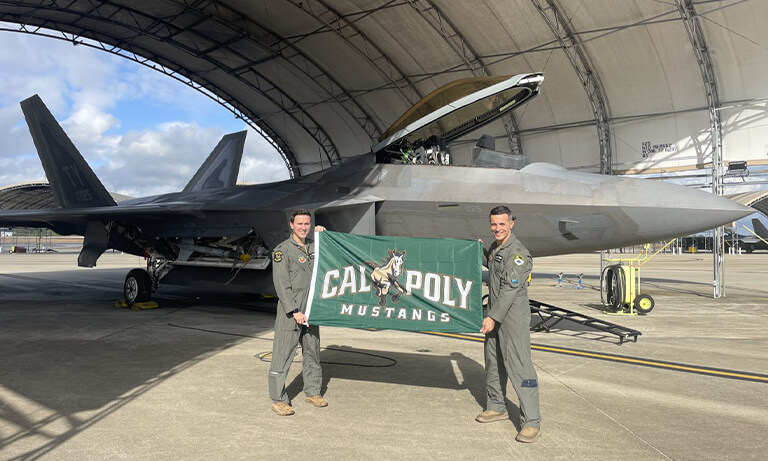Robert McInturff dreamed of piloting fighter jets while growing up in a family of aviators who loved to soar.
Early ambitions often give way to more practical pursuits, however, and so McInturff cultivated an interest in STEM which led him to Cal Poly and mechanical engineering.
McInturff graduated in 2007 and began designing heating and air conditioning systems, but the blue skies beckoned; hence he became a certified flight instructor and taught students on the side.
Still, McInturff longed for more.
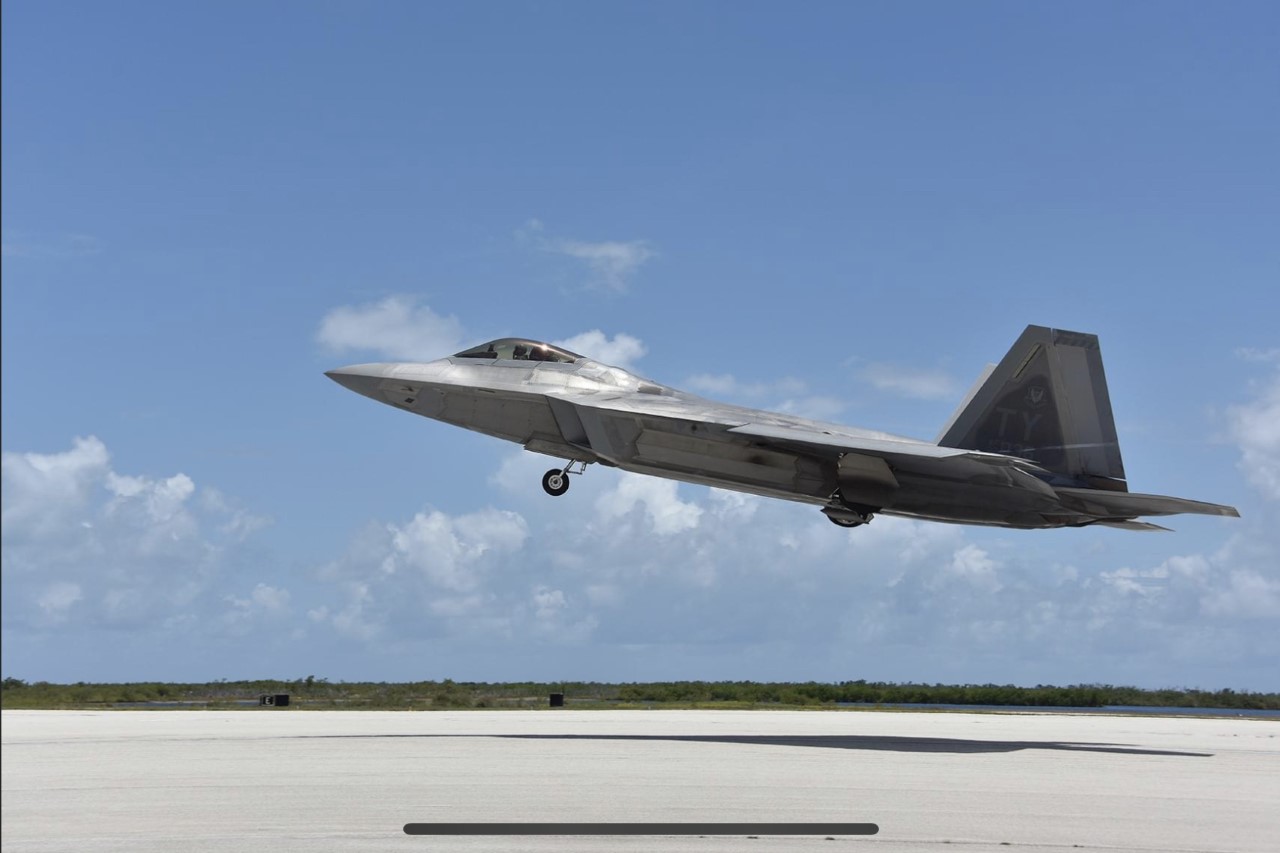
“I wanted to fly fighters as a kid, which seemed so unrealistic, but as I considered what really fulfilled me, I thought, ‘Maybe I actually could do this,” said McInturff, who spent hours researching entry points before landing on the Air Force.
When he called a recruiter and relayed his aim, he could sense her cynicism as so many share their dreams of flying, but doubters would not deter him: McInturff not only became a fighter jet pilot but now trains airmen to be combat-ready.
“I had no clue when I was at Cal Poly that I could have this career,” said the major who often has pinch-me moments while working as an F-22 instructor pilot for the 43rd Fighter Squadron in Florida.
McInturff’s engineering education helped him aim high and teach others to do the same, including a student who shared an almost inconceivable connection to his past.
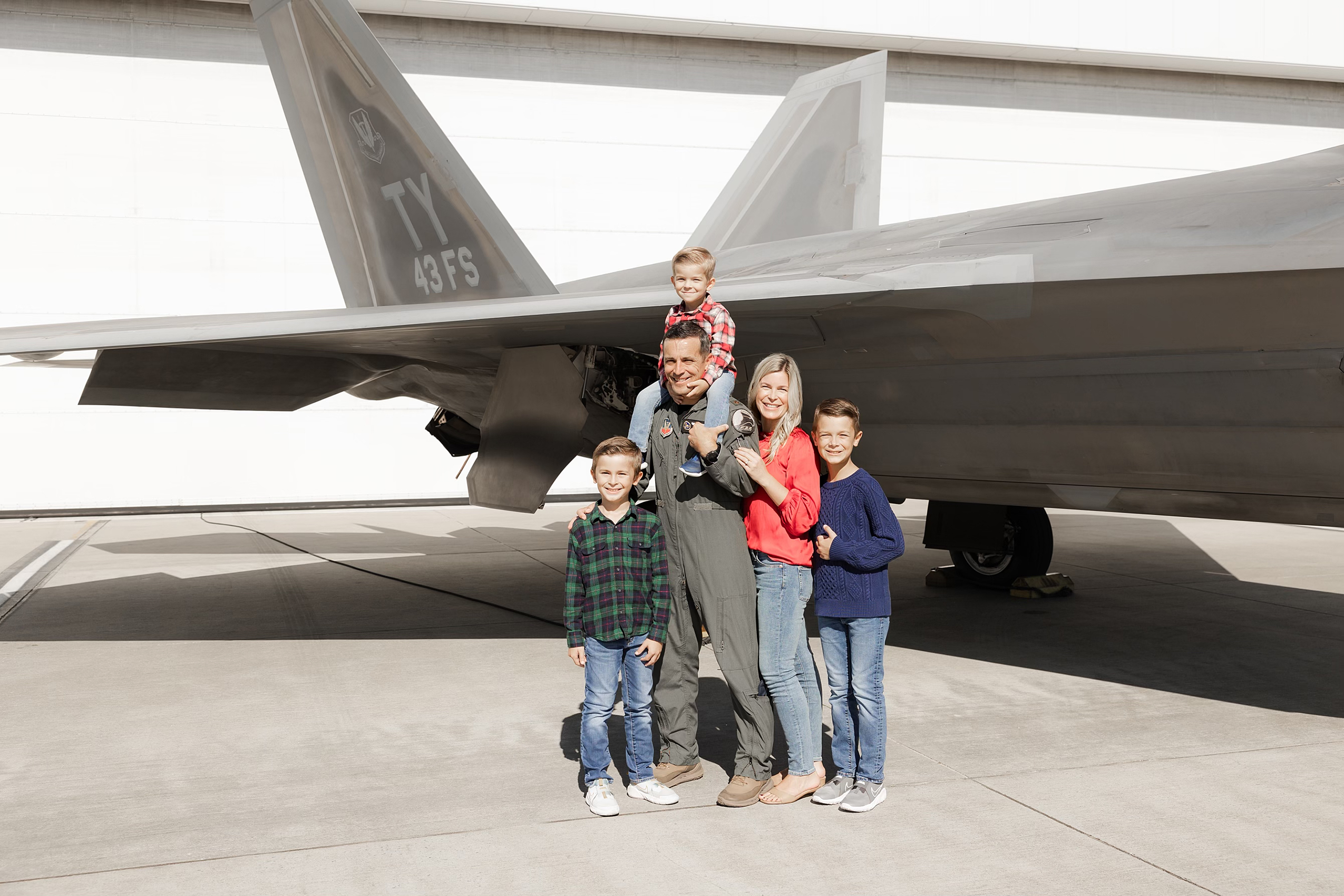
Where Am I Right Now?
McInturff developed his skills flying the $143 million (operation costs are estimated to boost the cost to $228 million over the lifespan of each plane) single-seat, twin engine fighter jet during his first operational assignment in Anchorage, Alaska, after officer training in Montgomery, Alabama, and pilot training in Laughlin, Texas.
“There is nothing out there that can maneuver like an F-22,” he said.
The combination of stealth, speed and lethal long-range weaponry makes the Lockheed Martin F-22 Raptor the king of air-to-air combat and an absolute feat of engineering.
“I am mystified, impressed and proud of American ingenuity,” McInturff said. “People who have gone to Cal Poly and equivalent places are the reason this plane exists.”
A STEM-based education gives pilots a unique understanding of the stealthy superfighter, according to McInturff, who said concepts such as velocity, relative angles and cumulative energy come into play when analyzing a flight path after a training sortie.
McInturff, now based at Eglin Air Force Base in Florida, is part of a cadre of instructors that trains 45 students a year.
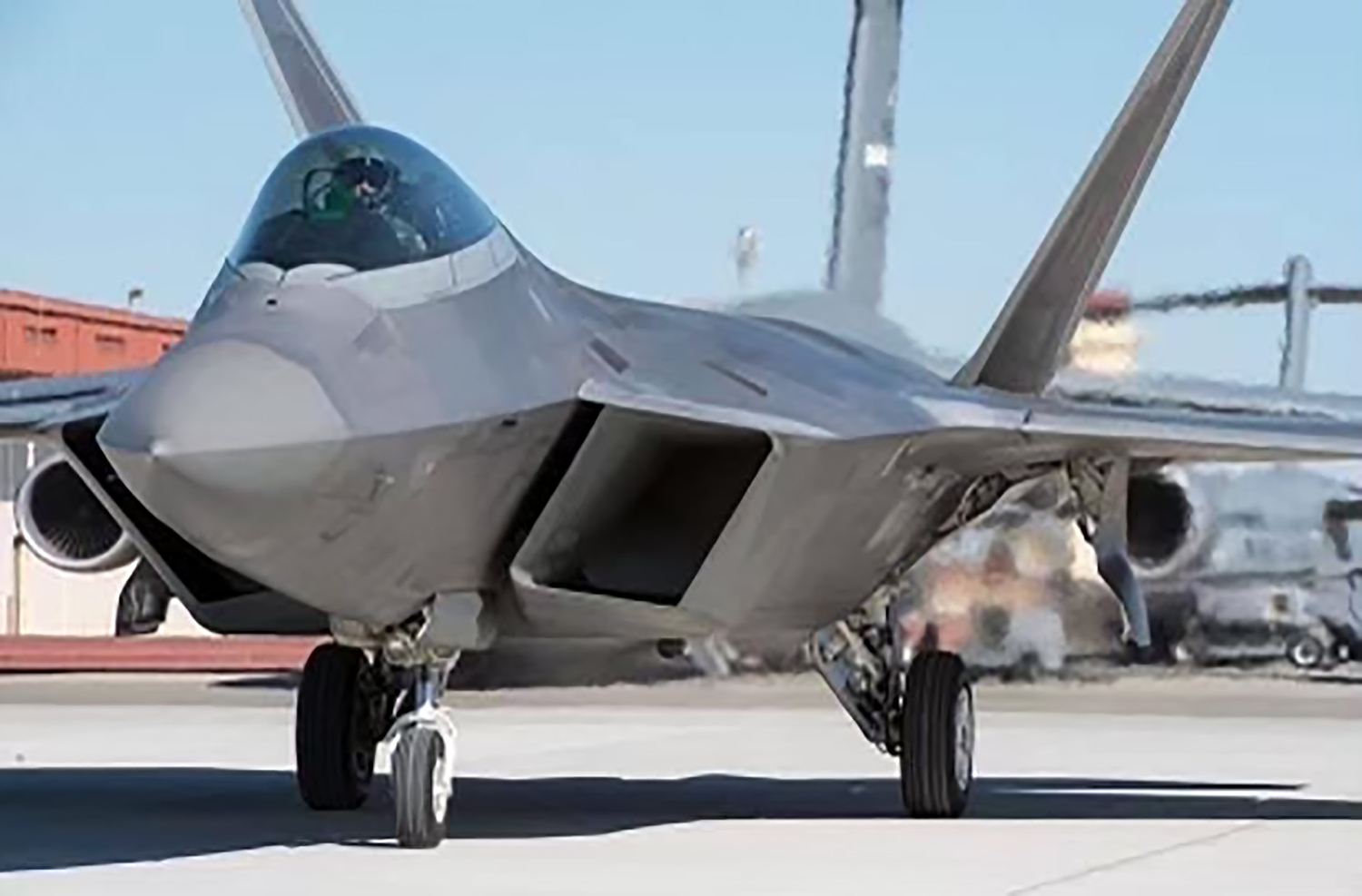
Upon graduation, students join an elite group of less than 850 to have flown the jet, said McInturff, who added more people had gone to space than flown an F-22 when he finished his pilot program in 2015.
Training is a time-intensive business. For every hour of time in the air, there can be one to two hours of preparation and three to eight hours spent analyzing each of the pilot’s moves postflight.
McInturff starts with F-22 basics, teaching maneuvers one would see at an airshow – extremely sharp turns, remarkably show speeds and vertical climbs powered by afterburning engines. Pilots then practice aerial combat maneuvers, engaging in classic dogfights where they try to outgun their opponent.
“Our job is to find and make sure that air threats are not a threat,” McInturff said.
Student pilots also develop the traits needed to be a good fighter: intelligence, athleticism and assurance.
“There is an element of Tom Cruise’s character in ‘Top Gun’ that you need,” he said. “You don’t want to be arrogant, but you have to be confident.”
Overall, though, Hollywood’s version of a fighter pilot – a brash, egotistical risk-taker – does not hold up, according to McInturff.
“The best of the best are the nicest folks in the unit,” he said, “but you never want to confuse their niceness with weakness.”
Most of McInturff’s students hail from the South or Midwest and while some have come from the West Coast, none have shared McInturff’s specific California connections.
That is until McInturff was driving into a parking lot at Eglin Air Force Base one dark morning when his headlights lit up a Cal Poly license plate frame affixed to a Jeep.
“I thought, ‘Where am I right now?’” he said, before racing into the study room for new pilots and yelling out, “Who in here drives a gray Jeep?”
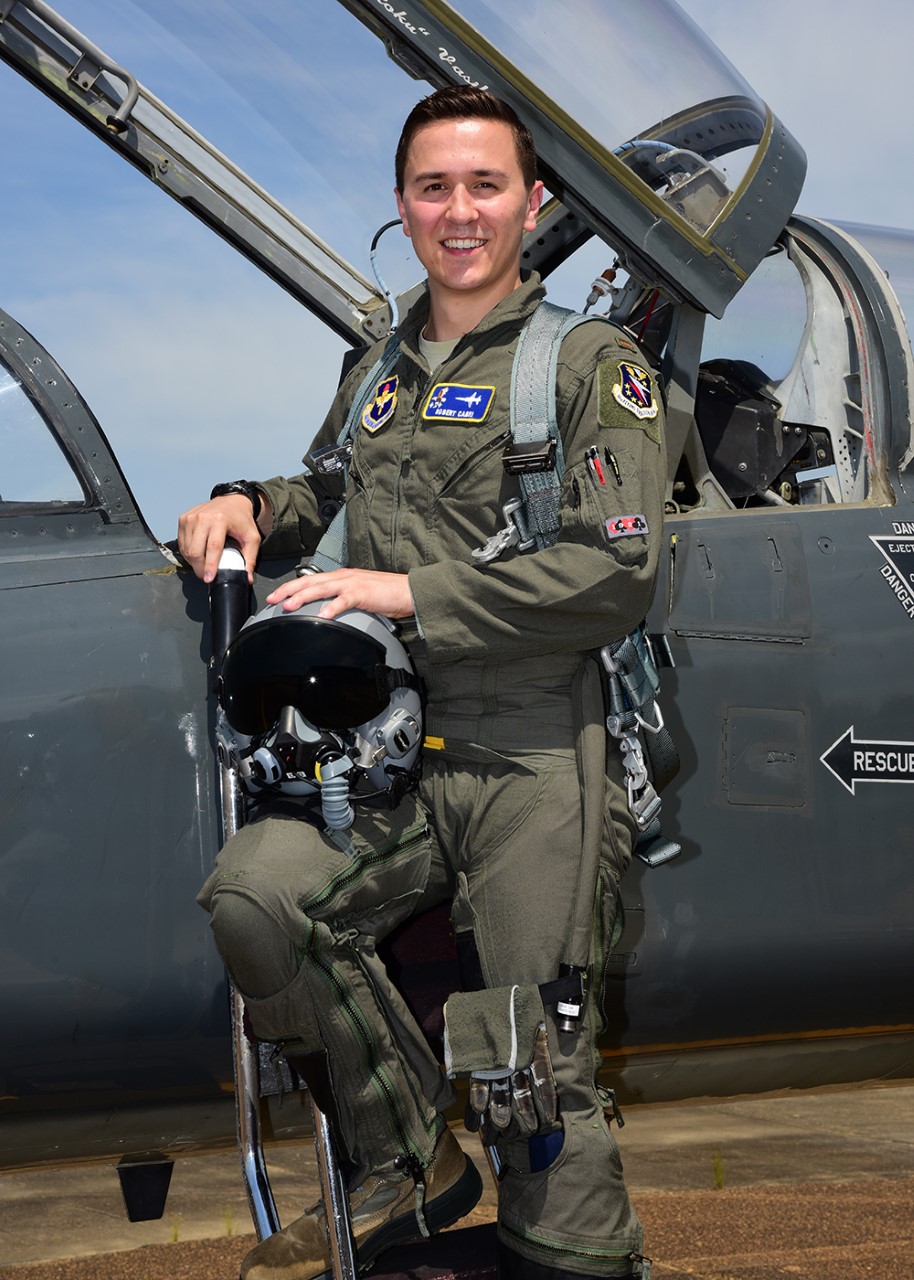
What Did I Do?
Growing up, Rob Cabri was always interested in things that moved – cars, planes and everything in between.
Cabri headed to Cal Poly to study mechanical engineering and prepare for a career designing cars, but along the way he shifted his focus to aeronautics.
“I started leaning toward doing something that would combine my interest in flying with my professional interests,” he said.
Cabri interned with Lockheed Martin after his junior year, then joined a senior project team building a boundary layer suction device for Cal Poly’s wind tunnel, learning firsthand about aerodynamics.
Before graduating in 2017, Cabri determined the Air Force would be his best route to piloting, explaining that “I wanted to do something that had a lasting effect, that would challenge me and also allow me to see the world.”
Six months after graduating from Cal Poly, Cabri entered officer training school, then pilot training prior to his F-22 education in Florida.

“The first time I took off in an F-22, I giggled,” Cabri said. “They have a lot of power, and they are a ton of fun to fly.”
The airman was studying with other trainees one dark morning when an instructor pilot burst into their room and asked who drove a gray Jeep.
Cabri, who had been careful to stay under the radar as a new pilot, said his first thought was, “What did I do?” as he claimed the vehicle.
McInturff connected Cabri to the Cal Poly license plate frame and discovered they both had obtained mechanical engineering degrees after growing up in San Jose.
“It blew my mind,” McInturff said.
While training together, the pair discussed their similarities and the parallels between engineering and piloting.
“Engineering gives a pilot the ability to look at a problem and make certain calculated decisions,” said Cabri, adding that the squadron’s hands-on training mirrors Cal Poly’s Learn by Doing philosophy.
Cabri finished his training in Florida and was assigned to a combat squadron in Alaska. He will start as a wingman on his way to becoming an instructor pilot, just as McInturff did 10 years ago.
For his part, McInturff will continue to mentor Cabri who he now calls a friend.
“It’s so cool to be able to be able to talk to someone who knows my past,” McInturff said. “We have a unique bond.”
By Emily Slater


